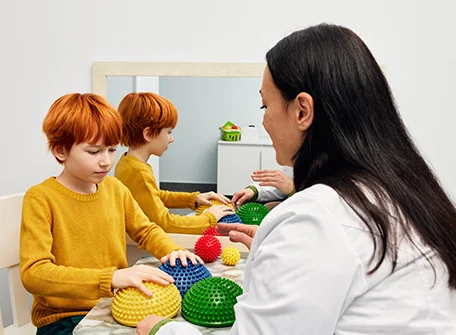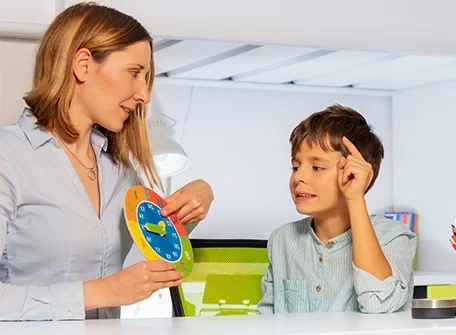Is your little one simply unable to tolerate loud environments? Or, are they too sensitive to strong smells? Do they bump into things or have a high or low pain threshold? Or, do you see your little one has difficulty with catching or running? Do they fail to recognize the urge to go to the toilet? Well, all these are symptoms of sensory processing disorders.
Sensory processing disorders or sensory issues are mostly common in kids diagnosed with Autism or ADHD(Attention deficit hyperactivity disorder). However, kids with no such mental conditions may also have sensory issues.
What happens is the brains of these little kids can not manage the information that comes in from the senses. The five main senses such as taste, smell, sound, touch and sight. Occupational therapy is a pathbreaking and result-oriented therapy that helps kids with sensory issues.
First, Understand Sensory Processing Challenges – Parents, Take a Look
See, there are two types of sensory challenges – oversensitivity and undersensitivity. And, for many kids, both of these sensory challenges exist.
Oversensitivity – In the case of oversensitivity, kids get overwhelmed because of the information received through their senses. And because of this sensory overload, kids tend to avoid sensations that they cannot tolerate. Kids with oversensitivity, avoid strong textures of food, scratchy clothing, loud music or sound, or bright or flickering lights.
Undersensitivity –On the other hand, in the case of undersensitivity, kids react too much or not at all, meaning the output from any sense cannot stimulate their sensations. So they seek more sensory stimulation. They may seem to be jumping, spinning, or chewing on objects. And, this under sensitivity makes kids aware of their surroundings or even their own body – often this leads to accidents or clumsiness. Plus, they may not react to sensory stimuli, such as pain or temperature.
List of the Signs of Sensory Processing Challenges
Here is a list of signs in a child with sensory issues to watch for:
- Feeling overwhelmed when around people and in certain places
- Does not like bright light or itchy/uncomfortable clothing
- Overreact to strong texture or smell of specific foods
- Look for quiet spots in more noisy/crowded places
- Do not prefer touching people or hugging them
- Avoid trying up new food and are picky eaters
- Often get upset about small changes in routine
- Feels anxious and seems to be clumsy and uncoordinated
- Involve in physical risks
- All the time touch objects
- Often squirms and fidgets
- Do not reach to pain or have a high tolerance for pain
- Do not concentrate on things and often gets distracted
Children with sensory issues also struggle with other senses such as – interoception, proprioception and the vestibular sense.
How Can Help a Kid with Sensory Processing Challenges?

Occupational therapists (OTs) are the ones who are trained and help kids with sensory issues. However, other professionals may identify challenges, such as physical therapists and speech therapists, pediatricians, school evaluators, or psychologists(including neuropsychologists).
Occupational Therapy – Designed for Sensory Issues
Occupational therapists create a one-of-a-kind therapy plan to address the specific sensory issues of a kid.
They involve kids in different types of activities. So, they expose children to sensory stimulation but in a more structured, repetitive way. They break down the activities and once the child completes one step, the therapist moves the kid on to more complex ones. Here the therapists help kids to understand their senses and teach them how to react/respond appropriately to sensory stimuli. This is more like training the brain to process sensations.
OTs also help to reduce tactile defensiveness. How? By giving the kids different objects to touch and feel. Because many of the kids are sensitive to loud sounds, they involve the kids in processing different sounds using instruments like drums, blowing toys, etc. Also, the occupational therapists collaboratively work with speech therapists to help those kids improve their listening and oral motor skills.
However, each therapy plan is unique for each kid. If you want to know which exercises or activities will benefit your kid, you need to consult a board-certified occupational therapist right away!
Finishing Up
Now, don’t get overwhelmed by the thought of finding a certified and experienced occupational therapist with a great track record!
Hope AMC, one of the top and biggest pediatric clinics in Dubai, houses the best of the best and compassionate plus certified therapists and doctors.
Visit the official website of Home AMC and book an appointment! The clinic is open all day every week.


